CLEAR Biographies of
Hawai‘i Labor History Figures
Fred Kinzaburo Makino Pablo Manlapit Harry Kamoku
John Reinecke Jack Hall Harriet Bouslog
Art Rutledge Harry Bridges Koji Ariyoshi
Elmo Samson Carl Damaso Henry Epstein Walter Kupau
Fred Kinzaburo Makino (August 28, 1877 -February 17, 1953)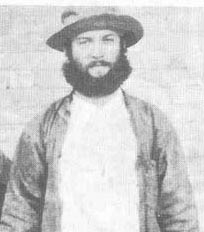 Fred Makino, was born in Yokohama, Japan the son of merchant/trader Joseph Higgenbotham and Kin Makino who raised him after his father died when he was only 4 years old. He came to Na‘alehu, Hawai‘i in 1899 and moved to Honolulu in 1901 and with his command of English he opened up a drug store that soon became a consulting service for poor Japapnese plantation workers. He soon became an advocate for the rights of Japanese in Hawai'i. In December of 1908 he joined with Yasutaro Soga, editor of the Japanese Newspaper Nippu Jiji, and Motoyuki Negoro to form the Zokyu Kisei Kai(Higher Wage Association) to begin a protest of the plantations' practice of paying Japanese laborers less than workers of other races. As Chairman of that early Japanese Labor Union, he led the first well organized strike of Japanese sugar workers on O‘ahu. Together with the other leaders he was arrested and imprisoned for on conspiracy charges until they were pardoned by Gov. Mott-Smith.
Fred Makino, was born in Yokohama, Japan the son of merchant/trader Joseph Higgenbotham and Kin Makino who raised him after his father died when he was only 4 years old. He came to Na‘alehu, Hawai‘i in 1899 and moved to Honolulu in 1901 and with his command of English he opened up a drug store that soon became a consulting service for poor Japapnese plantation workers. He soon became an advocate for the rights of Japanese in Hawai'i. In December of 1908 he joined with Yasutaro Soga, editor of the Japanese Newspaper Nippu Jiji, and Motoyuki Negoro to form the Zokyu Kisei Kai(Higher Wage Association) to begin a protest of the plantations' practice of paying Japanese laborers less than workers of other races. As Chairman of that early Japanese Labor Union, he led the first well organized strike of Japanese sugar workers on O‘ahu. Together with the other leaders he was arrested and imprisoned for on conspiracy charges until they were pardoned by Gov. Mott-Smith.
On Dec. 7, 1912 Makino started his own Newspaper, The Hawaii Hochi, out of his dissatisfaction with Yasutaro Soga's Japanese-language paper, the Nippu Jiji, which critics said was connected to the Hawaii Sugar Planters Association. The Hochi under Makino's leadership became a strong voice in support of Workers and their long struggle for recognition and acceptance.
Pablo Manlapit (January 17, 1891 - April 15, 1969)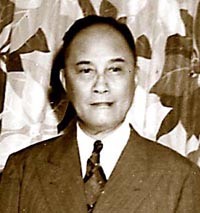 Manlapit came to Hawaii in 1910 as a labor recruit and worked at Hamakua Mill Co. He took classes at night and worked his way out of the plantation to become a labor clerk. He became one of the few Filipino lawyers in the 1920s and distinguished himself as spokesman for the Filipino labor movement here. He helped organize a Filipino Labor Union in Hawai‘i and was the central figure in the strikes in 1920 and 1924 that drew thousands of plantation workers. So strong was his influence among his countrymen that he was implicated in the violent September 1924 strike on Kaua‘i -- later known as the Hanapēpē Massacre -- even though he wasn't there. Sixteen were killed during the rioting, including four policemen.
Manlapit came to Hawaii in 1910 as a labor recruit and worked at Hamakua Mill Co. He took classes at night and worked his way out of the plantation to become a labor clerk. He became one of the few Filipino lawyers in the 1920s and distinguished himself as spokesman for the Filipino labor movement here. He helped organize a Filipino Labor Union in Hawai‘i and was the central figure in the strikes in 1920 and 1924 that drew thousands of plantation workers. So strong was his influence among his countrymen that he was implicated in the violent September 1924 strike on Kaua‘i -- later known as the Hanapēpē Massacre -- even though he wasn't there. Sixteen were killed during the rioting, including four policemen.
Manlapit was arrested with 60 other Filipinos, tried for conspiracy, and sentenced to 2 to 10 years at O‘ahu Prison. Upon his release, he went to California. He returned to Hawai‘i in 1933 but was deported to the Philippines in 1934 and died there in 1969.
Harry Kamoku (October 3, 1905 - March 23, 1957)
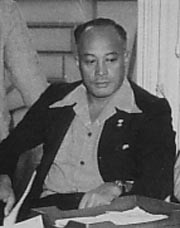 A man of Hawaiian-Chinese ancestry, Harry Kamoku, is one of the pioneers of the modern trade union in Hawai‘i. He was born in Hilo, Hawai‘i and at the age of 16 became an apprentice seaman and a member of the Sailors Union of the Pacific. Through his journeys, he witnessed firsthand the mistreatment of workers around the world. He even walked the picket lines during the 1934 San Francisco Dock strike. When he returned to Hilo in 1935, he was determined to organize the longshore workers around the ILWU principles. On November 22, 1935, Kamoku and 15 charter members held the first meeting of the Hilo Longshoremen's Association. Kamoku was elected president and business agent. When it became clear the HLA stood for all dock workers, regardless of nationality, it quickly gained the support of many. In 1938, when the Metal Trades Council and the Inland Boatmen's Steamship struck, Harry and the longshoremen staged a peaceful demonstration. However, the opposition felt otherwise. The police armed with riot guns opened fire on the unionists, wounding many. This incident became known as the Hilo Massacre. Despite the rocky beginnings, Harry Kamoku went on to organize many workers across the islands under the ILWU.
A man of Hawaiian-Chinese ancestry, Harry Kamoku, is one of the pioneers of the modern trade union in Hawai‘i. He was born in Hilo, Hawai‘i and at the age of 16 became an apprentice seaman and a member of the Sailors Union of the Pacific. Through his journeys, he witnessed firsthand the mistreatment of workers around the world. He even walked the picket lines during the 1934 San Francisco Dock strike. When he returned to Hilo in 1935, he was determined to organize the longshore workers around the ILWU principles. On November 22, 1935, Kamoku and 15 charter members held the first meeting of the Hilo Longshoremen's Association. Kamoku was elected president and business agent. When it became clear the HLA stood for all dock workers, regardless of nationality, it quickly gained the support of many. In 1938, when the Metal Trades Council and the Inland Boatmen's Steamship struck, Harry and the longshoremen staged a peaceful demonstration. However, the opposition felt otherwise. The police armed with riot guns opened fire on the unionists, wounding many. This incident became known as the Hilo Massacre. Despite the rocky beginnings, Harry Kamoku went on to organize many workers across the islands under the ILWU.
Read: The Hilo Massacre online
John Reinecke (1904 - June 11, 1982) 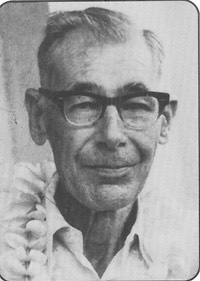 Reinecke was born in southeastern Kansas. He moved to Hawai‘i in 1926, became a Profesor at the University of Hawai‘i in creole languages, and wasted no time in becoming one of the islands' leading "dissenters" against the control of Hawaiian society by the plantocracy and the military that existed for much of this century. He formed life-long friendships with both Jack Hall of the ILWU and Art Rutledge of the Hotel Workers Union, who used to say, "John made the snow balls, and I threw them." Assisting the unions cost him and his wife their jobs during the red-baiting of the 50s as he was branded a communist and persecuted relentlessly as one of the "Hawai‘i Seven." He, nevertheless, stood courageously by his principles and wrote so extensively about the early years of the labor movement in Hawai‘i that he can truly be considered the father of Hawai‘i's Labor History. Many of the changes in Hawaiian social and labor organization for which he worked in the 1930s and 1940s became reality though at the time they seemed an impossible dream.
Reinecke was born in southeastern Kansas. He moved to Hawai‘i in 1926, became a Profesor at the University of Hawai‘i in creole languages, and wasted no time in becoming one of the islands' leading "dissenters" against the control of Hawaiian society by the plantocracy and the military that existed for much of this century. He formed life-long friendships with both Jack Hall of the ILWU and Art Rutledge of the Hotel Workers Union, who used to say, "John made the snow balls, and I threw them." Assisting the unions cost him and his wife their jobs during the red-baiting of the 50s as he was branded a communist and persecuted relentlessly as one of the "Hawai‘i Seven." He, nevertheless, stood courageously by his principles and wrote so extensively about the early years of the labor movement in Hawai‘i that he can truly be considered the father of Hawai‘i's Labor History. Many of the changes in Hawaiian social and labor organization for which he worked in the 1930s and 1940s became reality though at the time they seemed an impossible dream.
Jack Wayne Hall (February 28, 1915 - January 2, 1971)
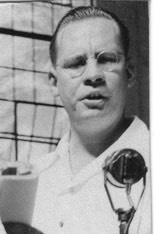 In 1935, a man arrived who would change the face of labor in Hawai‘i forever. Born in Ashland, Wisconsin, Jack Hall graduated from high school at the height of the Depression. He found that the only open jobs were on ships and became a sailor. During this time he observed first hand the oppressive conditions of the working man. In 1934, he marched in the picket lines of the waterfront strike. A frequent visitor to Hawai‘i, he came to Honolulu in 1935 with a mission to organize its workers. He was named regional director in 1944 of the International Longshoremen's and Warehousemen's Union (ILWU). With his leadership, ILWU was able to make a major impact on Hawai‘i's working class.
In 1935, a man arrived who would change the face of labor in Hawai‘i forever. Born in Ashland, Wisconsin, Jack Hall graduated from high school at the height of the Depression. He found that the only open jobs were on ships and became a sailor. During this time he observed first hand the oppressive conditions of the working man. In 1934, he marched in the picket lines of the waterfront strike. A frequent visitor to Hawai‘i, he came to Honolulu in 1935 with a mission to organize its workers. He was named regional director in 1944 of the International Longshoremen's and Warehousemen's Union (ILWU). With his leadership, ILWU was able to make a major impact on Hawai‘i's working class.
Harriet Bouslog (1912 - April 18, 1998)
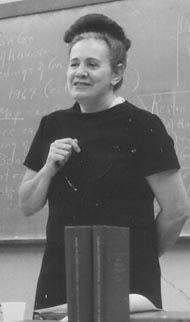 One of a handful of women lawyers practicing in Honolulu in the 1940s, Harriet Bouslog became a champion of the working class.
One of a handful of women lawyers practicing in Honolulu in the 1940s, Harriet Bouslog became a champion of the working class.
Often the only lawyer willing to be present when a laborer came up against an employer in court, she fought to establish fair labor laws and wages for the people of Hawai‘i. Her efforts were instrumental in abolishing the death penalty in the territory, and during the "Hawai‘i Seven" trial she served as counsel for defendants accused of being Communists.
Disbarred for openly questioning whether people charged with such crimes could receive a fair trial in Hawai‘i, she was reinstated when her appeals led to a landmark decision in her favor by the United States Supreme Court.
Arthur Rutledge (January 2, 1907 - September 22, 1997)
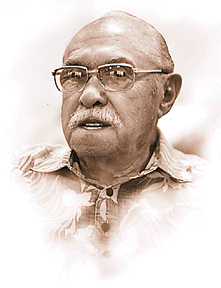 He was born in Poland. His parents uprooted the family and moved to the United States. His father would return back to Europe in 1914, leaving Arthur, his mother, and brother in the U.S. His mother later died when Rutledge was 11. It was in Seattle, working as a bartender in a nightclub, Rutledge saw a painting of Hawai'i and decided to go. He stowed away on a ship, and soon landed on O‘ahu in 1934. A former member of the San Francisco Bartenders' Union and began organizing several other bartenders. He expanded his efforts to include hotel workers. In 1939, he became financial secretary of the Hotel Restaurant and Bar Caterers Association of Honolulu, Local 5, and soon became their business agent.
He was born in Poland. His parents uprooted the family and moved to the United States. His father would return back to Europe in 1914, leaving Arthur, his mother, and brother in the U.S. His mother later died when Rutledge was 11. It was in Seattle, working as a bartender in a nightclub, Rutledge saw a painting of Hawai'i and decided to go. He stowed away on a ship, and soon landed on O‘ahu in 1934. A former member of the San Francisco Bartenders' Union and began organizing several other bartenders. He expanded his efforts to include hotel workers. In 1939, he became financial secretary of the Hotel Restaurant and Bar Caterers Association of Honolulu, Local 5, and soon became their business agent.
During World War II he stood up for Japanese Americans and vouched for their loyalty to the U.S. when it was very unpopular to do so. He organized bus drivers, dairy workers and many other groups, becoming the leader of the Hawaii Teamsters, local 996 as well.
Read: Rutledge Unionism online
Harry Bridges (July 28, 1901 - March 30, 1990)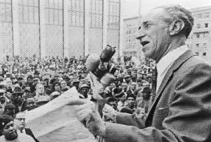 Originally from Melbourne, Australia, Harry Bridges enrolled in the Merchant Marines at the age of 16. While sailing the world, he abandoned ship in San Francisco. There he joined the Sailors Union of the Pacific where he became a longshoreman and a member of the International Longshoremen's Association. He rose to notoriety when he organized a waterfront strike in 1934 for better working conditions. In June of 1937, the ILWU (the Pacific Coast District of the ILA) voted to leave the ILA to become part of the Congress of International Organization. Bridges became the founding president of the International Longshoremen's Warehousemen's Union where he would serve until 1977. At an ILWU convention in 1940, he proposed a plan to organize in Alaska, Hawai‘i, and the Pacific Coast. This plan spurred the progressive changes in Hawai‘i, where both the dock and plantation workers benefitted. Despite dealing with deportation and the opposition of management, Harry Bridges continued to fight for worker betterment.
Originally from Melbourne, Australia, Harry Bridges enrolled in the Merchant Marines at the age of 16. While sailing the world, he abandoned ship in San Francisco. There he joined the Sailors Union of the Pacific where he became a longshoreman and a member of the International Longshoremen's Association. He rose to notoriety when he organized a waterfront strike in 1934 for better working conditions. In June of 1937, the ILWU (the Pacific Coast District of the ILA) voted to leave the ILA to become part of the Congress of International Organization. Bridges became the founding president of the International Longshoremen's Warehousemen's Union where he would serve until 1977. At an ILWU convention in 1940, he proposed a plan to organize in Alaska, Hawai‘i, and the Pacific Coast. This plan spurred the progressive changes in Hawai‘i, where both the dock and plantation workers benefitted. Despite dealing with deportation and the opposition of management, Harry Bridges continued to fight for worker betterment.
Koji Ariyoshi (1912 - 1976)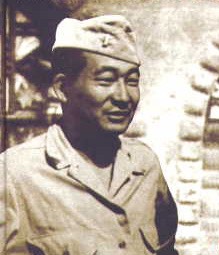 Born on a coffee plantation in Kona, he was a student, a stevedore, a World War II internee, military language specialist, writer, editor and political activist who dedicated his life to the advancement of working men and women and their right to organize.
Born on a coffee plantation in Kona, he was a student, a stevedore, a World War II internee, military language specialist, writer, editor and political activist who dedicated his life to the advancement of working men and women and their right to organize.
Because he was in the mainland at the outbreak of WWII, he was interned at Manzinar relocation camp, where he enlisted in the Army and was assigned to Yenan China as an interpreter and US military observer. Back in Hawai'i after the war, he established and edited his own po-labor newspaper, the Honolulu Record and helped to write for and edit Ti Mangyuna, with Rev. Emilio Yadao. In 1951, with John and Aiko Reinecke, Jack Hall of the ILWU, and others he was arrested under the Smith Act for being a communist.
Though he was regarded by all as a quiet and unassuming man, the pages of the Honolulu Record over the ten years he was able to keep it going, not only chronicled the growth of Hawaii's labor movement which was being ignored by the major papers, but reveal the eloquence and passion of his contempt for injustice and social inequities in Hawai‘i, the U.S. and Asia.
Elmo Samson (1915- March 27, 1978)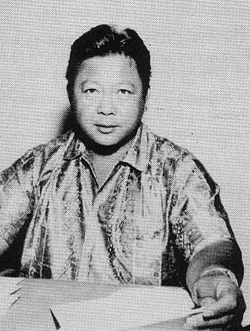 As a child, Emiliano "Elmo" Samson slept with his parents in a ditch because they had been evicted from plantation housing during a strike in the 1920s. He started working on a sugar plantation like his parents and then got a job as a shipfitter and chipper at Pearl Harbor Naval Shipyard. After the War he helped organize the fledgling Hawai'i local of the Laborers Union, which he saw grow from just a few hundred to 3,500 at the time of hs death. Under his nearly 20 years of leadership, Hawai‘i's local 368 of the Laborers Union (LIUNA) became one of the major building trades unions in the State.
As a child, Emiliano "Elmo" Samson slept with his parents in a ditch because they had been evicted from plantation housing during a strike in the 1920s. He started working on a sugar plantation like his parents and then got a job as a shipfitter and chipper at Pearl Harbor Naval Shipyard. After the War he helped organize the fledgling Hawai'i local of the Laborers Union, which he saw grow from just a few hundred to 3,500 at the time of hs death. Under his nearly 20 years of leadership, Hawai‘i's local 368 of the Laborers Union (LIUNA) became one of the major building trades unions in the State.
He also was instrumental in forming the Hawaii State Federation of Labor (AFL-CIO) and Hawaii Building Trades Council. In 1960 he co-negotiated the first state-wide master agreement in conjunction with the Hawaii Carpenters Union and Electrical Workers (IBEW 1186).
One of the state's most respected and influential union leaders in the 60s and 70s, he lived an unassuming life with his family in Waimanalo and later in Wahiawa. Memories of his family's early days in poverty stayed with him throughout his life and helped shape the nature of the Laborers' contract negotiations.
Carl Damaso (1917 - January 26, 1990)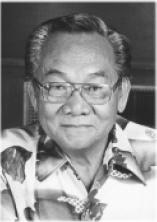 Born in San Felipe, a town in Zambales Province of the Philippines, Calixto "Carl" Damaso signed a labor contract to work in Hawai‘i when in 1931 he was just 14 years old. Three years later we was helping to organize a strike of Filipino sugar workers at Ola'a Plantation on the Big Island. Fired and black-listed after that, he moved to Maui and helped Antonio Fagel to organize the last ethnic strike in the islands at Pu‘unēnē .
Born in San Felipe, a town in Zambales Province of the Philippines, Calixto "Carl" Damaso signed a labor contract to work in Hawai‘i when in 1931 he was just 14 years old. Three years later we was helping to organize a strike of Filipino sugar workers at Ola'a Plantation on the Big Island. Fired and black-listed after that, he moved to Maui and helped Antonio Fagel to organize the last ethnic strike in the islands at Pu‘unēnē .
Realizing the weakness of Filipino only organizing, Carl soon joined the ILWU's campaign to organize all the sugar workers into a single, inter-racial, ethnically diverse union. Blackballed again he moved to O‘ahu and worked at Pearl Harbor through the war, after which he became a stevedore with Castle & Cooke. He was a key organizer for the ILWU, helping to recruit and muster Filipino support from the sakadas brought in to break the great sugar strike in 1946 and during the long dock strike of 1949.
ILWU elected him director of O'ahu Division and then President of the Hawai‘i Local from 1964 to 1981.
Henry Epstein (September 12, 1922 - 1995)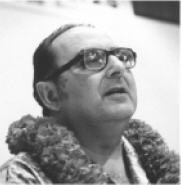 When County road workers in Hilo asked the ILWU for help in organizing a union, ILWU asked the United Public Workers of America (UPWA) if they had a good organizer who could come to their aid. The UPWA decided young Henry Epstein, was the aggressive organizer they needed in the Territory of Hawai‘i, seen by the union as a colonial outpost under the tight control of the Big Five sugar factors. The 25-year-old Epstein was in Chicago at the time and already a business agent for a federal workers UPWA local.
When County road workers in Hilo asked the ILWU for help in organizing a union, ILWU asked the United Public Workers of America (UPWA) if they had a good organizer who could come to their aid. The UPWA decided young Henry Epstein, was the aggressive organizer they needed in the Territory of Hawai‘i, seen by the union as a colonial outpost under the tight control of the Big Five sugar factors. The 25-year-old Epstein was in Chicago at the time and already a business agent for a federal workers UPWA local.
Arriving in 1947, Epstein was outraged at the way public workers were being exploited. Guided by the ILWU pushed for racial cooperation among Island workers and fought to abolish discrimination and build solidarity between the territorial and different island counties. He encouraged working people to join political parties and community associations. Regarded as the father of the UPW in Hawai‘i, he led blue-collar public workers led on strikes and marches from a time when there was no collective bargaining allowed through the 60s and 70s when UPW and its former rival, HGEA, joined together in solidarity as locals of the same national union, the American Federation of State, County and Municipal Employees (AFSCME).
Walter Kupau (April 1, 1936 - August 11, 1999)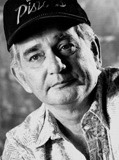 Kupau, a native Hawaiian, born in the poor and tough neighborhood of Kalihi on O'ahu became the financial secretary, business representative and chief negotiator for the 7,000-member Hawaii Carpenters Union Local 745 and was responsible for the day-to-day operations of the union from 1978 to 1999. Under his guidance Local 745 became the largest local in the Carpenters Union and the fifth-largest union in Hawai'i. He was elected the third president of the Hawai‘i State AFL-CIO, and served from 1969 to 1984,during which time he doubled that organization's membership, and lobbied hard and successfully to defeat efforts to enact a union-busting "Right-to-Work" law.
Kupau, a native Hawaiian, born in the poor and tough neighborhood of Kalihi on O'ahu became the financial secretary, business representative and chief negotiator for the 7,000-member Hawaii Carpenters Union Local 745 and was responsible for the day-to-day operations of the union from 1978 to 1999. Under his guidance Local 745 became the largest local in the Carpenters Union and the fifth-largest union in Hawai'i. He was elected the third president of the Hawai‘i State AFL-CIO, and served from 1969 to 1984,during which time he doubled that organization's membership, and lobbied hard and successfully to defeat efforts to enact a union-busting "Right-to-Work" law.
Arrested and imprisoned by the federal government on a perjury charge after a highly publicized trial for swearing under oath that his union's Area Standards picketing of a Maui contractor was constitutionally protected informational picketing. A tireless union organizer, he was often at odds with less aggressive unions and rarely hesitated to provoke his own arrest on a picket line when he wanted to draw more public attention to the dispute.
Read: Aupuni I Lā'au online
